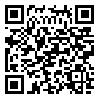BibTeX | RIS | EndNote | Medlars | ProCite | Reference Manager | RefWorks
Send citation to:
URL: http://ijaup.iust.ac.ir/article-1-227-en.html
The problems of distressed urban areas are getting worse year after year. Due to limited resources and Amenities of municipal organizations for solving every problem concerning urban distressed textures, it is essential to determine the priorities of each area based on identified factors and criteria. In distressed areas, there are different circumstances and distinctive citizens with their needs and special expectations, so in this article we face many criteria with fuzziness. This study aimed to apply the fuzzy analytic hierarchy process (FAHP) to prioritize the most important issues for each urban distressed area in Karaj. For this purpose a hierarchical model with 4 main factors (social, physical, environmental and economic) and 17 sub factors were suggested. Four zones of the city (central Karaj, Hesarak, Mehrshahr and Fardis) were analyzed. The findings of the paper suggest that social factors with a weights of about 30% are the most significant problems cause in these areas and physical factors with 27% weight we’re in second place. Among the areas, Fardis and Hesarak areas were most affected by social factors and Central Karaj and Mehrshar had the most priority for physical factors.
| Rights and permissions | |
 | This work is licensed under a Creative Commons Attribution-NonCommercial 4.0 International License. |





